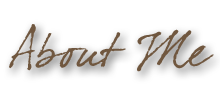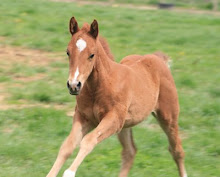I ran across this list on the Augusta Futurity website and thought it was one of the better explanation of terms. I imagine we sound like we are speaking a foreign language to most people, even other horse people, so maybe this will help!
Cutting Horse Terminology
Here is a list of commonly used cutting horse terms:
Adjusted monitor system: System by which scores may be adjusted. If there is a discrepancy on a major penalty (three or five points), the judge monitor will review the incident on video tape. He will then ask the judges to look at the run again on video tape and determine if they want to change their score at that point.
Adjusted score: If a score is adjusted through the adjusted monitor system, the adjusted score would then be posted on the scoreboard after it is reviewed.
Back fence: The fence directly behind the her cow. A cow being worked must not be allowed to reach any portion of the back fence.
Bubble: The area or space that surrounds a cow. A cow's speed and direction can be influenced by positioning a horse near the edge of a cow's bubble.
Bump the bit: To pull back with one or both reins just enough to make the horse feel and react to the bit. A rider can inadvertently bump the bit and confuse the horse when the reins are uneven or when he holds them too tight.
Collected: A horse that is gathered up underneath itself and is balanced so that it can quickly respond to the moves of a cow.
Committing: When a cow is visibly cut or chosen from the herd, the horse is obligated or committed to work that cow.
Corrected score: On occasion, the score that a judge marks on his written scorecard may be different from that which is recorded electronically and posted following a horse's run. These scores are checked during the cattle change, and if there is a discrepancy, the corrected score is posted on the scoreboard. the score that the judge wrote down is the true score.
Cutter's cross: A two-handed grip on the reins used during the training of a cutting horse.
Cutter's slump: The posture a rider should have when he is working a cow. The cutter's back should be relaxed and bent, never rigid.
Cutting for shape: While most cutters will attempt to cut or separate a particular cow from the herd, the cattle do not always cooperate. When this occurs, the rider will cut for shape, thereby separating the cow that remains after the rest of the herd has returned to the back fence area. Most novice riders cut for shape.
Cutting horse: A horse developed through superior breeding and careful training. Now considered the aristocrat of Western horses. Originally prized on ranches for its unique skills and its ability to cut, or separate, individual cows from a herd. Most cutting horses are quarter horses, but they are not limited to that breed.
Deep cut: According to the NCHA rules, the cutter must make at least one deep cut into the herd. Typically, the cutter will go into the middle of the herd or deeper to qualify for this rule. The opposite of this would be picking a cow off of the edge.
Draw: The horse's position in the working order, which determines in which order he will work. In NCHA major events, the draw for the first go-round is done two weeks prior to the start of the event. The subsequent go-round, semi-finals and finals draws are done as soon as possible following the qualifying go-round.
Drive: Forcing a group of cattle forward in a controlled and calm manner.
Dry work: Basic training for the horse done without the use of cattle.
Fresh horse: A horse that is not prepared to work a cow and will often not respond properly to the movements of a cow.
Fresh cattle: A group of cattle not previously used for a cutting. Cattle are usually changed after 10 to 15 riders have competed and are replaced by cattle that have not been used for cutting during a given event.
Head a cow: Placing a horse in front of a cow in order to stop a cow or force it to change direction.
Herd holder: Two riders positioned on each side of the cow responsible for helping the cutter make his cut and keeping the herd grouped while a cutting is in progress.
Hot quit: According to NCHA rules, the cutter may quit (pull off) a cow he is working when that cow is obviously turned away from his horse or when the cow comes to a dead stop in the arena. If the rider quits at any other time, it is referred to as hot quit and is a three-point penalty.
Judge monitor: At all NCHA major events, a judge monitor is in attendance to review on video tape any runs in which there is a discrepancy between judges concerning a major penalty.
Leak: The action of a horse during or after a turn that causes the horse to move forward toward the cow it is cutting instead of staying back; often causing the horse to lose its working advantage.
Long: When a horse moves ahead of a cow being worked instead of remaining across from the cow's shoulder or head. This poor positioning will allow the cow to gain the working advantage.
Loose reins: Dropping the reins to allow slack and allow the horse to work an isolated cow. Points are deducted from a cutter's score if he uses the reins to guide the horse during his part of the contest.
Major penalty: A three or five-point infraction.
Minor penalty: A one-point infraction.
Miss: Overrunning a cow, which results in a loss of working position. A miss costs the horse and rider one point. Often a horse will have a miss immediately prior to losing a cow.
Non-Pro: Any rider who holds a valid non-pro card and is a member of the NCHA. A non-pro must own his own horse and may not receive remuneration for training cutting horse.
Novice: Refers to a fairly inexperienced class. In many NCHA-sanctioned shows there are classes for $1,500 Novice and $3,000 Novice horses, indicating the total amount of money a horse may have earned prior to the start of that calendar year. There are novice rider classes for levels of skill.
Out of position: When a horse is unable to respond quickly enough to keep control over the cow it is working. The horse loses its working advantage over the cow.
Peeling: A limited number of cattle are separated from the main herd and forced to the center of the arena. The rider then selects the cow to be cut as the cattle attempt to rejoin the herd or 'peel' back to the herd.
Press off: Using the pressure of the leg closest to the cow being cut to move the horse away from the cow.
Press up: Using pressure of the leg next to the herd to move the horse toward the cow being cut.
Rate: The ability to stay in the correct cutting position. A horse remains parallel with the cow being worked.
Reading the cow: Anticipating the movements of a cow.
Run: The 2 1/2 minute competition of entering the arena and cutting generally from one to three cows for a score.
Schooling: Training a cutting horse. Allowing the horse to work on its own and intervening when the horse works improperly. This intervention is not allowed during competition.
Set for the stop: Pushing on the horn and slumping in the saddle, allowing the horse to stop and preventing the rider from bouncing in the stirrups or moving forward. Small pressure used in the stirrups to keep the heels down.
Settle or settled: When cattle are changed during competition, incoming cattle must be calmed and allowed to become accustomed to a horse moving back and forth in front of them. Cattle can be used in NCHA events only once.
Short: When a horse is behind the cow or out of position while working a cow.
Sidepass: Horizontal movement of a horse without moving forward or backward.
Sour cattle: Cattle that are continually worked and become unresponsive to the action of a cutting horse; inactive cattle.
Stay hooked: A common phrase indicating that the rider is continuing to work the same cow rather than quitting and cutting a different cow.
Sticky: Cattle that are difficult to separate from one another.
Time line: A line marked on the side of the arena which electronically starts the 2 1/2 minute time clock when the cutter and his horse cross it to near the herd and begin their run.
Tune: Improving a horse's reaction time by demanding perfect stops, light turns and good positioning while working a cow.
Turnback help: Two riders that are positioned in front of the herd. These riders are responsibly for driving cattle back toward the herd and the cutting horse while a cut is being made.
Working advantage: A controlling position of staying parallel to the cow with the horse's head next to the cow's shoulder. Allows the horse to stop a cow but also be able to turn back quickly enough to block a change in direction by the cow.
Workoff: If there is a tie for first place at any major NCHA event, a tie-breaking competition, known as a workoff, will be held. After a brief period to check on scores, a coin is flipped to determine the working order for the workoff. The horses are again allowed 2 1/2 minutes to work. The highest score in the workoff determines the champion of the event, with the second highest score being the reserve champion. However, prize money is split equally between the horses tied for first place regardless of the outcome of the workoff.
Youth: Competition open to any NCHA member who is age 18 or younger.
Wednesday, January 23, 2008
Definitions for the uninitiated
Posted by Paige at 7:59 PM
Labels: definitions
Subscribe to:
Post Comments (Atom)





















1 comments:
Thanks for the voc. lesson. Beautiful studs.
Mom
Post a Comment